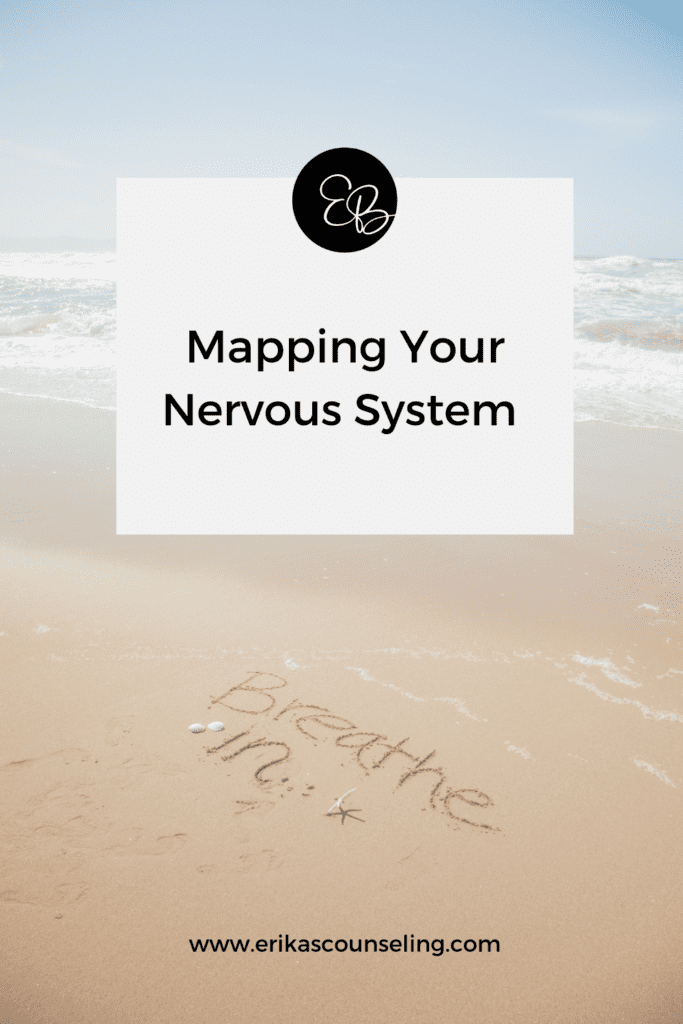Understanding the workings of your Autonomic Nervous System is a valuable puzzle piece in your mental and emotional health. Do you ever feel frustrated when you react in a way that you later regret or are perpetually on edge? Or perhaps, find yourself stuck in the same familiar patterns that no longer serve you? Maybe you feel numb, stuck or disconnected? You are not alone.

There are answers that can be found in the workings of your Autonomic Nervous System. Your Autonomic Nervous System influences your mental, behavioral and physiological processes. Your Nervous System holds a story of how your past is influencing your present. How you perceive danger, safety, and your ability to foster connection.
It takes a bit of effort to understand the intricacies of your Autonomic Nervous System and how it impacts your mental health. Be patient in the process. There is still so much research to be done, but once you get a glimpse into understanding how your nervous system works, it can provide you with clarity. The following is merely an introduction!

Polyvagal Theory originally emerged in 1994 by Dr. Stephen Porges as he was studying the Vagus Nerve in newborns. Since then it has expanded into the world of therapy and has provided a valuable framework of our biological processes. It guides how we move in and out of safety and threat throughout each day and how these processes influence our physical and mental health.
We come into this world wired to connect and find safety. The attachment between newborn and primary caregiver lays an important neural platform for the Nervous System. We have an amazing built in system to scan for cues of safety and cues of danger. You may think of your Autonomic Nervous System as your personal alarm or surveillance system. It is continually scanning for danger in your environment. This system is scanning for cues of safety within your body, within your environment and within your interactions with other people. Sometimes this safety system is spot on and other times it is responding in a way that does not warrant the intensity of the alarm. This safety scanning is happening below your level of consciousness and is called Neuroception. The goal is to put meaning to these experiences, which then provides you with the power to choose your response. It is so important to remember that due to Neuroception you did not cognitively choose your reaction to a threat … whether real or perceived. With this understanding we then can bring in conscious awareness to put words to your experience, to cultivate an understanding of your story. To bring the unconscious, conscious.

The Autonomic Nervous System
The Autonomic Nervous System is made up of two main branches: The Parasympathetic and the Sympathetic. These branches respond to signals and sensations from your body and environment throughout three pathways.
The Parasympathetic branch has two pathways. They are found in the Vagus Nerve. Vagus is the latin word for “Wandering”. Which, is appropriately named since it is the longest cranial nerve. The vagus nerve begins at your brain stem and travels bidirectional throughout your body. It travels down from your brainstem branching out to your neck, chest, heart, lungs, diaphragm and stomach. And upward connecting to your throat, eyes and ears. Within the parasympathetic nervous system the vagus nerve is responsible for regulating internal organ functions like digestion. A strong vagus nerve can help you be more resistant to stress and illness.
The vagus is divided into two parts: The Ventral Vagus Pathway and the Dorsal Vagus Pathway.
The Ventral Vagus Pathway is best known for the phrase of, “Rest and Digest.” The feeling that all is well. You may experience a feeling of safety, of connectedness or excitement. In this ventral vagus state your other pathways in your nervous system are working in order to maintain homeostasis, they are running effectively in the background. Managing your heart rate, your breathe, digestion and more. The ventral vagus pathway is the state that you most often want to spend your time in. However, many of us are distant from this state, living in a chronic stress and survival mode.
If you don’t want to remember the term Ventral Vagus you could name this state, Safety, Content, or All is Well. Choose a name that will resonate with your state of being in the feeling of homeostasis.
The Dorsal Vagus Pathway responds to cues of extreme danger. The dorsal vagus is responsible for experiencing feelings of numbness, being frozen, or the sensation of “not here.” These are moments of collapse and shut down. This is a biological response in attempt to keep you safe. However, we are not meant to stay in this state. Again, you could come up with your own name that best describes your dorsal vagus sate. Perhaps, Shut down, Alone, Empty, or Frozen.
The Sympathetic Nervous System branch is found in the middle part of your spinal cord. This pathway is known as your, “Fight or Flight” system. This pathway prepares you for action and responds to cues of danger at an unconscious level. When your sympathetic nervous system is activated a host of physiological reactions take place. Adrenaline and cortisol are released and your body is physically ready to fight or flee. You may feel symptoms such as: Increased heart rate, rapid or difficulty breathing, sweating, dizziness, the need to use the bathroom, shaky, or sweaty palms.
These various systems and responses keep us alive and each serve a vital function. However, problems arise when the sympathetic or dorsal vagal systems are activated continuously and for an extended amount of time. While, less time is spent in a ventral vagus state. The initial goal is to become familiar and bring awareness to your various nervous system states. With awareness and the right tools you are able to bring yourself out of a dorsal vagal and / or sympathetic response. You discover what coping skills you have been using in attempt to “feel better” when being in a survival state, which then allows you to gain the tools to choose a different response in the future. Note to remember: this takes time to gain awareness and to retrain your nervous system responses!

Mapping Your Nervous System
A helpful way to map and notice your various states throughout the day is to envision a ladder. At the bottom of the ladder is your Dorsal Vagus System, in the middle of the ladder is your Sympathetic System and at the top of the ladder is your Ventral Vagus System. Begin noticing when you are on the various rungs of the ladder … what brought you there? And what helps you get back up?
It is normal to move up and down the ladder throughout the day due to normal life stressors. With the goal of moving back up the ladder with ease and flexibility. However, due to chronic stress, trauma and early attachment wounds we know that our nervous systems can get stuck in a state of survival. Literally living in a feared response, easily triggered and activated. Making it difficult to find homeostasis. Making it difficult to make sense of your story. Making it difficult to heal. Making it difficult to find peace; to feel at home within yourself, within your environment and within your relationships. However, so much hope lies in the knowledge that just as your brain can change and adapt, so can your nervous system.
When in a Ventral Vagus state, safety and connection are activated. Curiosity and change are possible from this sate. This is a place of healing. This is a place of joy and hope.
Therapy is a wonderful tool to gain awareness into your various nervous system states and process past traumas, childhood attachment wounds, and have the opportunity to gain clarity and re-tell your story.
There is help. There is hope.
Posts for educational purposes only. Not a replacement for therapy or medical advice.
References: The Polyvagal Theory in Therapy: Engaging the Rhythm of Regulation by Deb Dana, LCSW
